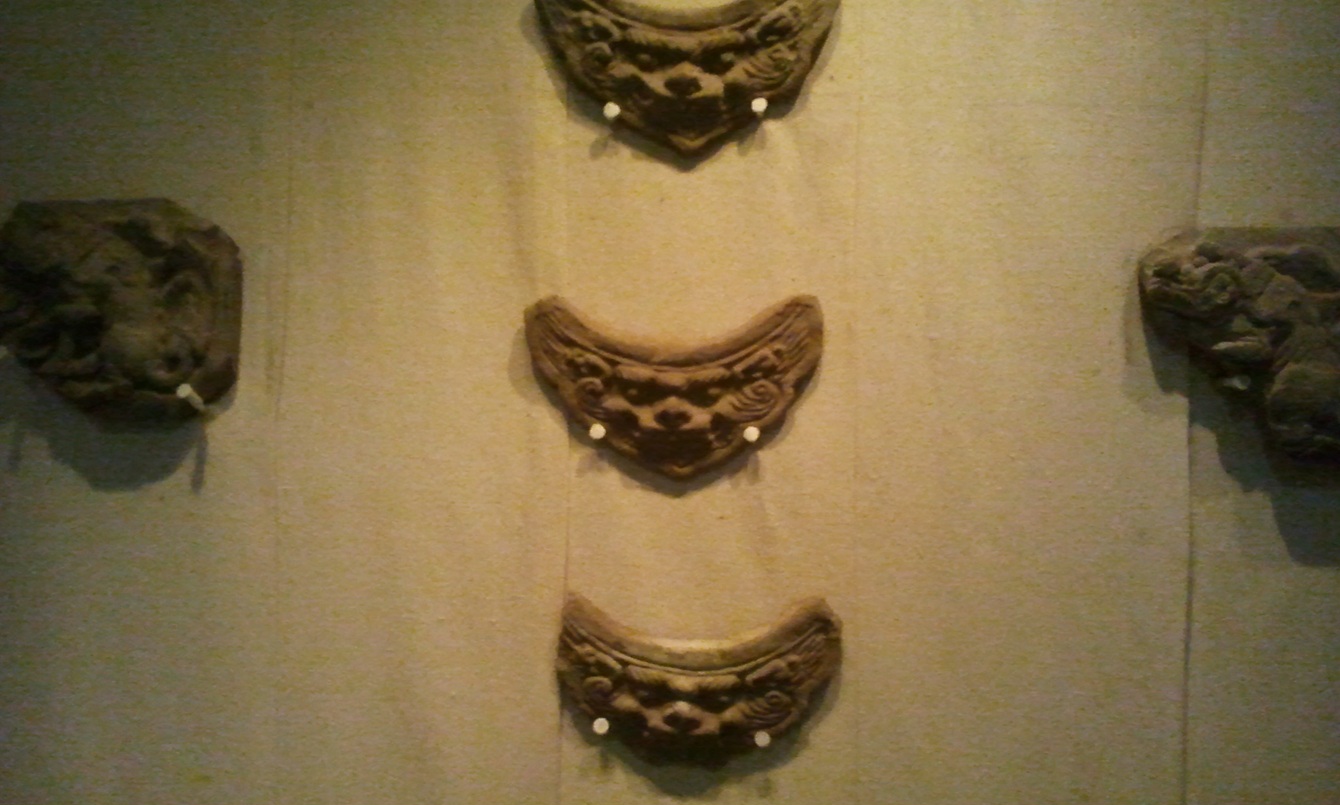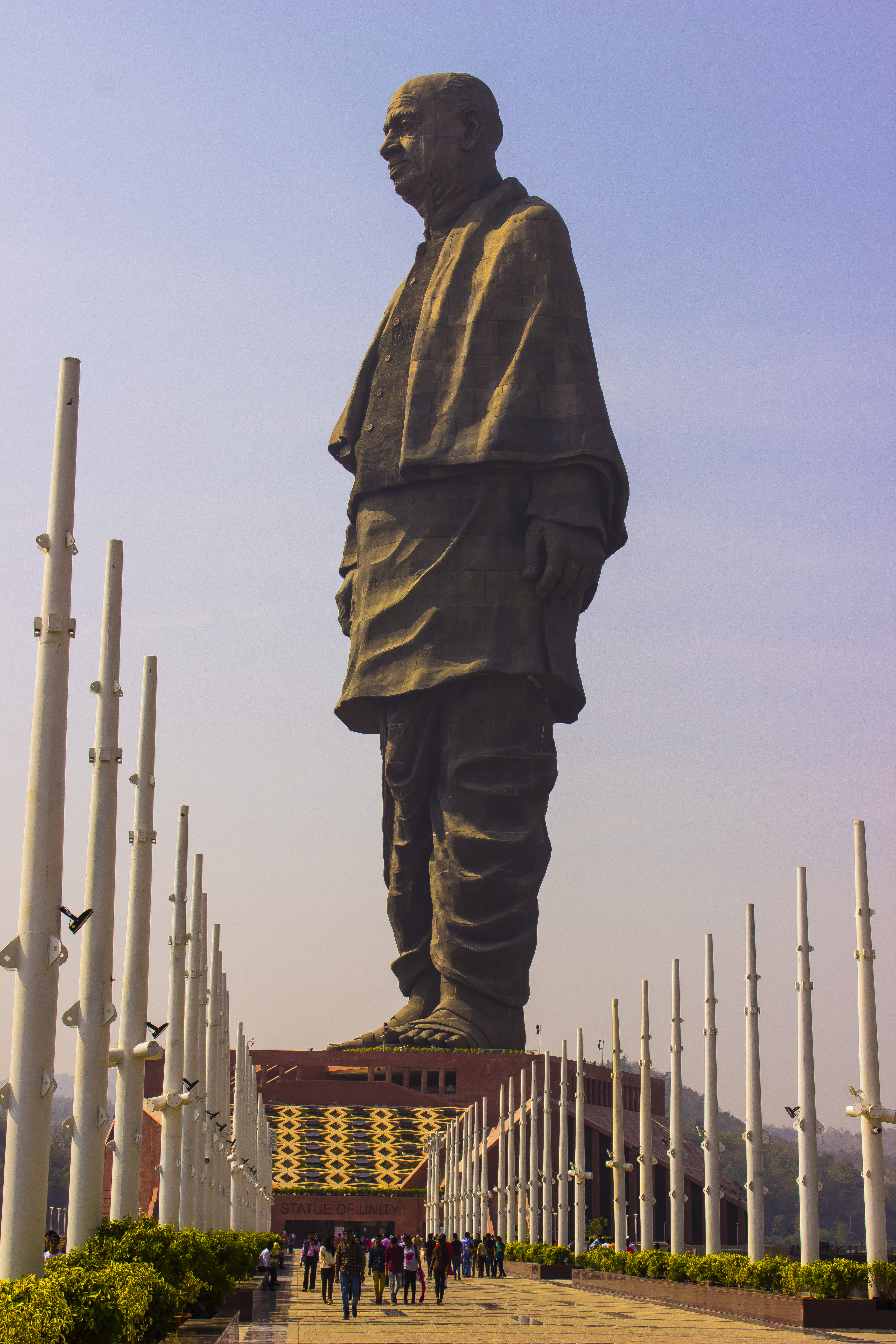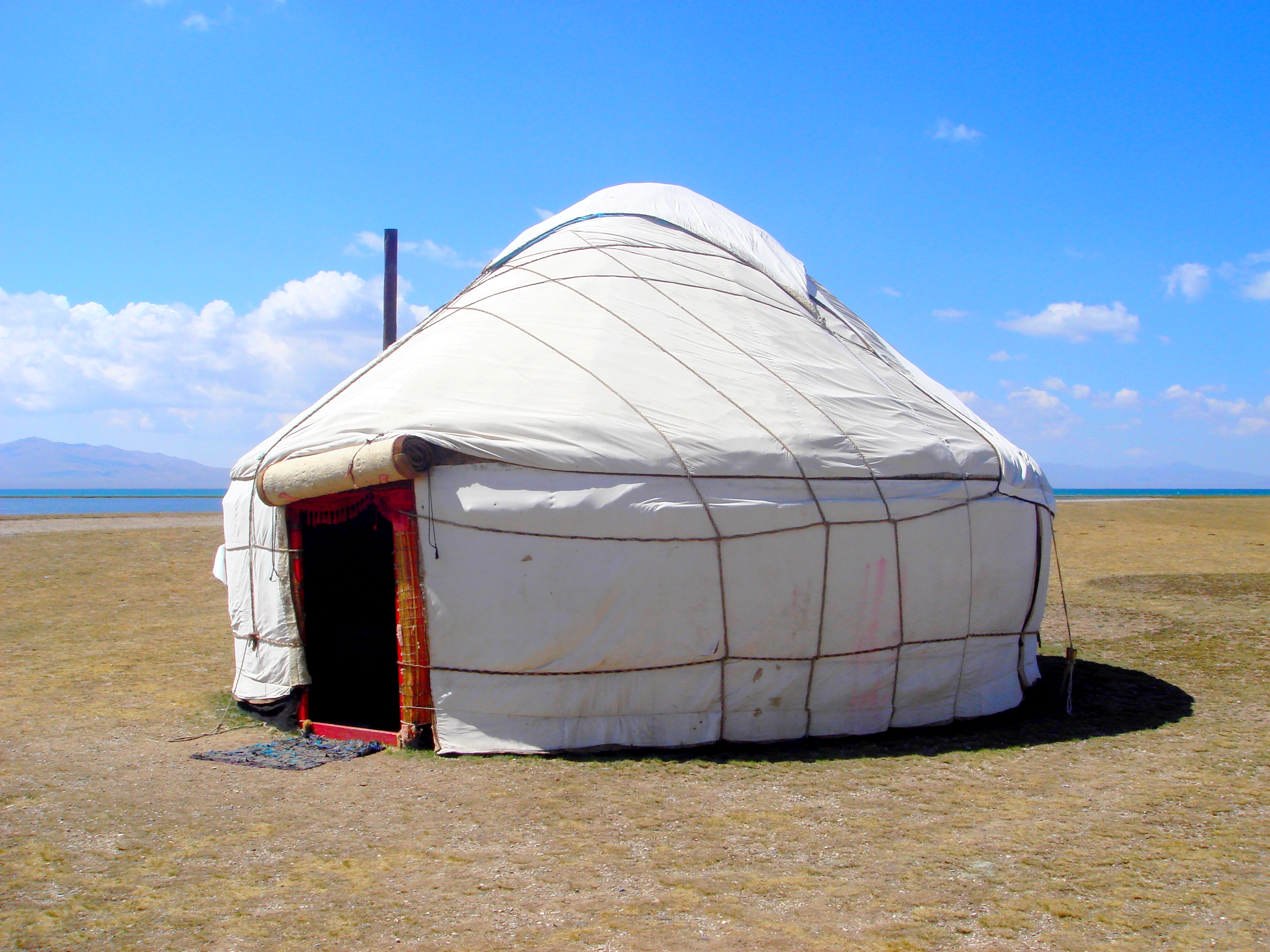|
Equestrian Statue Of Genghis Khan
The Genghis Khan Equestrian Statue, part of the Genghis Khan Statue Complex, is a tall, stainless steel statue of Genghis Khan on horseback and the world's tallest equestrian statue. It is located on the bank of the Tuul River at ''Tsonjin Boldog'', 54 km (33.55 mi) east of the Mongolian capital Ulaanbaatar, where, according to legend, he found a golden whip. The statue is symbolically pointed east towards his birthplace. It is on top of the Genghis Khan Statue Complex, a visitor centre, itself tall, with 36 columns representing the 36 khans from Genghis to Ligdan Khan. It was designed by sculptor D. Erdenebileg and architect J. Enkhjargal and erected in 2008. Visitors walk to the head of the horse through its chest and neck, where they have a panoramic view. The main statue area will be surrounded by 200 ger (yurts), [...More Info...] [...Related Items...] OR: [Wikipedia] [Google] [Baidu] |
Ulaanbaatar
Ulaanbaatar (; mn, Улаанбаатар, , "Red Hero"), previously anglicized as Ulan Bator, is the capital and most populous city of Mongolia. It is the coldest capital city in the world, on average. The municipality is located in north central Mongolia at an elevation of about in a valley on the Tuul River. The city was originally founded in 1639 as a nomadic Buddhist monastic center, changing location 28 times, and was permanently settled at its current location in 1778. During its early years, as Örgöö (anglicized as Urga), it became Mongolia's preeminent religious center and seat of the Jebtsundamba Khutuktu, the spiritual head of the Gelug lineage of Tibetan Buddhism in Mongolia. Following the regulation of Qing-Russian trade by the Treaty of Kyakhta in 1727, a caravan route between Beijing and Kyakhta opened up, along which the city was eventually settled. With the collapse of the Qing Empire in 1911, the city was a focal point for independence efforts, leading ... [...More Info...] [...Related Items...] OR: [Wikipedia] [Google] [Baidu] |
The New York Times
''The New York Times'' (''the Times'', ''NYT'', or the Gray Lady) is a daily newspaper based in New York City with a worldwide readership reported in 2020 to comprise a declining 840,000 paid print subscribers, and a growing 6 million paid digital subscribers. It also is a producer of popular podcasts such as '' The Daily''. Founded in 1851 by Henry Jarvis Raymond and George Jones, it was initially published by Raymond, Jones & Company. The ''Times'' has won 132 Pulitzer Prizes, the most of any newspaper, and has long been regarded as a national " newspaper of record". For print it is ranked 18th in the world by circulation and 3rd in the U.S. The paper is owned by the New York Times Company, which is publicly traded. It has been governed by the Sulzberger family since 1896, through a dual-class share structure after its shares became publicly traded. A. G. Sulzberger, the paper's publisher and the company's chairman, is the fifth generation of the family to head the pa ... [...More Info...] [...Related Items...] OR: [Wikipedia] [Google] [Baidu] |
Statues Of Military Officers
A statue is a free-standing sculpture in which the realistic, full-length figures of persons or animals are carved or cast in a durable material such as wood, metal or stone. Typical statues are life-sized or close to life-size; a sculpture that represents persons or animals in full figure but that is small enough to lift and carry is a statuette or figurine, whilst one more than twice life-size is a colossal statue. Statues have been produced in many cultures from prehistory to the present; the oldest-known statue dating to about 30,000 years ago. Statues represent many different people and animals, real and mythical. Many statues are placed in public places as public art. The world's tallest statue, ''Statue of Unity'', is tall and is located near the Narmada dam in Gujarat, India. Color Ancient statues often show the bare surface of the material of which they are made. For example, many people associate Greek classical art with white marble sculpture, but there is evidenc ... [...More Info...] [...Related Items...] OR: [Wikipedia] [Google] [Baidu] |
Statues Of Monarchs
A statue is a free-standing sculpture in which the realistic, full-length figures of persons or animals are carved or cast in a durable material such as wood, metal or stone. Typical statues are life-sized or close to life-size; a sculpture that represents persons or animals in full figure but that is small enough to lift and carry is a statuette or figurine, whilst one more than twice life-size is a colossal statue. Statues have been produced in many cultures from prehistory to the present; the oldest-known statue dating to about 30,000 years ago. Statues represent many different people and animals, real and mythical. Many statues are placed in public places as public art. The world's tallest statue, ''Statue of Unity'', is tall and is located near the Narmada dam in Gujarat, India. Color Ancient statues often show the bare surface of the material of which they are made. For example, many people associate Greek classical art with white marble sculpture, but there is evidenc ... [...More Info...] [...Related Items...] OR: [Wikipedia] [Google] [Baidu] |
Colossal Statues
Colossal may refer to: * ''Colossal'' (film), a 2016 science fiction film starring Anne Hathaway * (Colossal) Pictures, entertainment company which closed in 2000 * Colossal (band), American punk band formed in 2001 * "Colossal", a song by Scale the Summit from the album '' The Collective'' * "Colossal", a song by Wolfmother from their debut album ''Wolfmother'' * Colossal (blog), art and visual culture blog * Colossal (chestnut), American chestnut cultivar * Colossal Biosciences, a biotechnology company See also * * * Colossal Connection, former professional wrestling tag team * Colossal Kongs The Colossal Kongs was a professional wrestling tag team who competed in the USWA, GWF and WCW. In WCW they were managed by Harley Race, who brought them to the promotion. The team was made up of Awesome Kong and Krusher Kong (Krusher Kong w ..., former professional wrestling tag team * Colossus (other) {{Disambiguation ... [...More Info...] [...Related Items...] OR: [Wikipedia] [Google] [Baidu] |
Equestrian Statues In Mongolia , the fictional nation in which the televisio ...
The word equestrian is a reference to equestrianism, or horseback riding, derived from Latin ' and ', "horse". Horseback riding (or Riding in British English) Examples of this are: * Equestrian sports *Equestrian order, one of the upper classes in ancient Rome *Equestrian statue, a statue of a leader on horseback *Equestrian nomads, one of various nomadic or semi-nomadic ethnic groups whose culture places special emphasis on horse breeding and riding * Equestrian at the Summer Olympics, a division of Olympic Games competition Other *The ship ''Equestrian'', used to transport convicts from England to Australia, for example Alfred Dancey. See also *Equestria, Pretoria *Equestria Equestria () is the fictional setting of the fourth and fifth generations of the My Little Pony toy line and media franchise, including the animated television series '' My Little Pony: Friendship Is Magic'' and '' My Little Pony: Pony Life''. ... [...More Info...] [...Related Items...] OR: [Wikipedia] [Google] [Baidu] |
Cultural Depictions Of Genghis Khan
Culture () is an umbrella term which encompasses the social behavior, institutions, and norms found in human societies, as well as the knowledge, beliefs, arts, laws, customs, capabilities, and habits of the individuals in these groups.Tylor, Edward. (1871). Primitive Culture. Vol 1. New York: J.P. Putnam's Son Culture is often originated from or attributed to a specific region or location. Humans acquire culture through the learning processes of enculturation and socialization, which is shown by the diversity of cultures across societies. A cultural norm codifies acceptable conduct in society; it serves as a guideline for behavior, dress, language, and demeanor in a situation, which serves as a template for expectations in a social group. Accepting only a monoculture in a social group can bear risks, just as a single species can wither in the face of environmental change, for lack of functional responses to the change. Thus in military culture, valor is counted a typica ... [...More Info...] [...Related Items...] OR: [Wikipedia] [Google] [Baidu] |
List Of Tallest Statues
This list of tallest statues includes completed statues that are at least tall, which was the assumed height of the Colossus of Rhodes. The height values in this list are measured to the highest part of the human (or animal) figure, but exclude the height of any pedestal (plinth), or other base platform as well as any mast, spire, or other structure that extends higher than the tallest figure in the monument. The definition of for this list is a free-standing sculpture (as opposed to a relief), representing one or more people or animals (real or mythical), in their entirety or partially (such as a bust). Heights stated are those of the statue itself and (separately) the total height of the monument that includes structures the statue is standing on or holding. Monuments that contain statues are included in this list only if the statue fulfills these and the height criteria. Existing statues , - , 92 , Lord Shiva at Sursagar , , Shiva , Vadodara, Gujarat , India , 2002 ... [...More Info...] [...Related Items...] OR: [Wikipedia] [Google] [Baidu] |
Nestorian Cross
The Nestorian Cross is associated with the Church of the East. It is composed of a cross similar to the Maltese cross, with four arms of roughly equal length which narrow in width towards the center of the cross. In Eastern Christian art in China, these crosses are sometimes simplified and depicted as resting on a lotus flower or on a stylized cloud. Cross of the Assyrian Church of the East The cross of the Assyrian Church of the East has three dots lining the left cross-bar, three dots lining the right cross-bar, two dots lining the top bar, and one dot on the bottom bar. These nine dots represent the nine orders of ministry within the church. Between the two dots on the top bar is a crown with three prongs, representing the Trinity The Christian doctrine of the Trinity (, from 'threefold') is the central dogma concerning the nature of God in most Christian churches, which defines one God existing in three coequal, coeternal, consubstantial divine persons: God the F .. ... [...More Info...] [...Related Items...] OR: [Wikipedia] [Google] [Baidu] |
Xiongnu
The Xiongnu (, ) were a tribal confederation of nomadic peoples who, according to ancient Chinese sources, inhabited the eastern Eurasian Steppe from the 3rd century BC to the late 1st century AD. Modu Chanyu, the supreme leader after 209 BC, founded the Xiongnu Empire. After their previous rivals, the Yuezhi, migrated west into Central Asia during the 2nd century BC, the Xiongnu became a dominant power on the steppes of East Asia, centred on the Mongolian Plateau. The Xiongnu were also active in areas now part of Siberia, Inner Mongolia, Gansu and Xinjiang. Their relations with adjacent Chinese dynasties to the south-east were complex—alternating between various periods of peace, war, and subjugation. Ultimately, the Xiongnu were defeated by the Han dynasty in a centuries-long conflict, which led to the confederation splitting in two, and forcible resettlement of large numbers of Xiongnu within Han borders. During the Sixteen Kingdoms era, as one of the "Five B ... [...More Info...] [...Related Items...] OR: [Wikipedia] [Google] [Baidu] |
Bronze Age
The Bronze Age is a historic period, lasting approximately from 3300 BC to 1200 BC, characterized by the use of bronze, the presence of writing in some areas, and other early features of urban civilization. The Bronze Age is the second principal period of the three-age system proposed in 1836 by Christian Jürgensen Thomsen for classifying and studying ancient societies and history. An ancient civilization is deemed to be part of the Bronze Age because it either produced bronze by smelting its own copper and alloying it with tin, arsenic, or other metals, or traded other items for bronze from production areas elsewhere. Bronze is harder and more durable than the other metals available at the time, allowing Bronze Age civilizations to gain a technological advantage. While terrestrial iron is naturally abundant, the higher temperature required for smelting, , in addition to the greater difficulty of working with the metal, placed it out of reach of common use until the end o ... [...More Info...] [...Related Items...] OR: [Wikipedia] [Google] [Baidu] |
Yurt
A yurt (from the Turkic languages) or ger ( Mongolian) is a portable, round tent covered and insulated with skins or felt and traditionally used as a dwelling by several distinct nomadic groups in the steppes and mountains of Central Asia. The structure consists of a flexible angled assembly or latticework of wood or bamboo for walls, a door frame, ribs (poles, rafters), and a wheel (crown, compression ring) possibly steam-bent as a roof. The roof structure is sometimes self-supporting, but large yurts may have interior posts supporting the crown. The top of the wall of self-supporting yurts is prevented from spreading by means of a tension band which opposes the force of the roof ribs. Yurts take between 30 minutes and 3 hours to set up or take down, and are generally used by between five and 15 people. Nomadic farming with yurts as housing has been the primary life style in Central Asia, particularly Mongolia, for thousands of years. Modern yurts may be permanently built ... [...More Info...] [...Related Items...] OR: [Wikipedia] [Google] [Baidu] |

.png)


.jpg)


